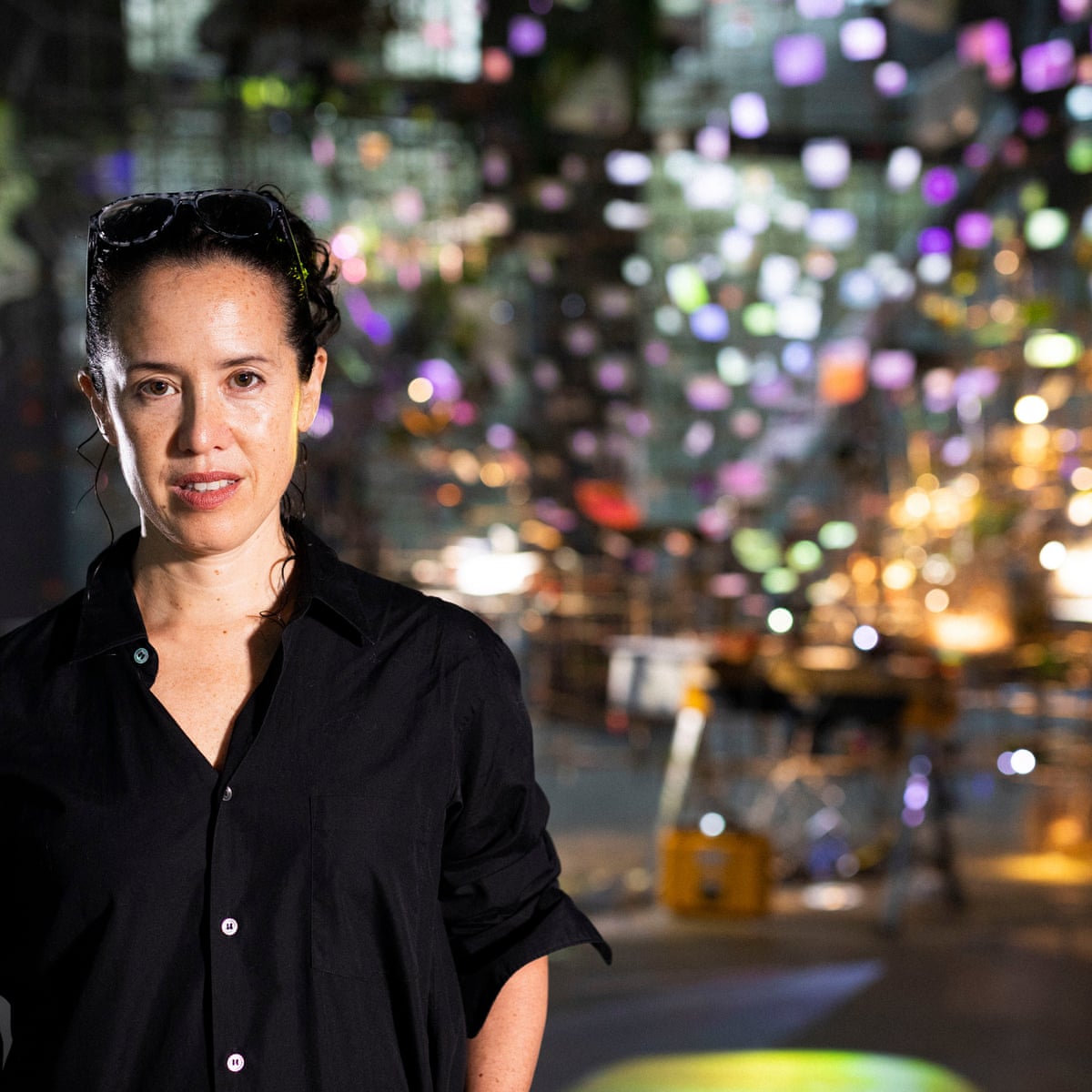"at the core of the work, I'm thinking about the edge between life and art and trying to have the viewer move in and out of it all the time. So that's something very familiar juxtaposed with something that's very unfamiliar." (3:15)
An awesome professor at Columbia University's School of the Arts, Sarah Sze is a Chinese-American Installation Artist whose work ethic I find very irritating. But I'm not gonna talk about that. Rather, the biggest fascination lies within her ability to "transport and display those things deemed uninteresting, cheap, and culturally unworthy" (All Kinds of Everything) by utilizing all kinds of random everyday objects into her often titanic in scale installative works. In other words, Sarah Sze’s art highlights the hyperrealism of quantifying and measuring information through redefining meanings of everyday objects in abstract installation work.
Sarah's work encompasses a lot of planning and spontaineity, but the core themes are often surrounding creating dense landscapes made of found objects and rigid, sharp architecture, examining the way "we" quantify and scale and document the universe. Her work also attempts to "colonize" and "recolonize"
"overlooked and peripheral spaces" (Tanya Bonak Art Gallery), as a lot of it goes into both more public spaces like parks and subways, but also into historically discriminatory and colonial structures of Museums. Baudrillard wrote, "imaginary... disappears with simulation" (3), and I believe that Sarah attempts to undo that dissapearance, to highlight the absurdity of the simulation, to remind us that the real is still that gigantic map the cartographers dreew upon the Empire.
On the other hand, I also understand that Sarah's work is about questioning a lot of things that we take for granted because they're very well established, and putting their ridiculousness into the spotlight. It seems unclear, though, what Sarah suggest the audience is supposed to do with those questions; do they really have an answer?
Now, a totally mundne section about Sarah's family, just because it was a bit fascinating for me:
Sarah's grandfather is a prominent political figure- Alfred Sao-ke Sze was "a prominent Chinese politician and diplomat during the most turbulent period in modern Chinese history" (Wikipedia) New Media is still a very limited, developing space in China (Guan Xiao), so it's interesting to think about how much Sarah was influenced by being born in America.
David Sze, Sarah's older brother, is a very contrasting individual, being known for co-founding Facebook and currently working as an investor with companies like Roblox and Discord (Greylock). It's interesting to see that he is also quite immersed in the creation of simulations and enchanced realities, but from a much more consumer and capitalistic perspective.
As for Baudrillard, he comes into play with the "whole traditional mode of causality" (55) being questioned in Sarah's modernist installation works. Looking into "Designing a Subway Station", Sarah highlights the absurdity of casuality- the things "we take for granted and we do repetitively". To me, that's what most of her works are- utilizing objects of every day life in such a way that perverts reality just enough for the audience to simply stop and wonder about the many amusing and odd things we hear but don't listen to, see but don't notice.





"utilizing objects of every day life in such a way that perverts reality just enough for the audience to simply stop and wonder about the many amusing and odd things we hear but don't listen to, see but don't notice. "--Beautifully written!
ReplyDelete